Birds are a vital part of the Gaza Strip’s ecosystem and are an important part of the culture, history, and livelihood of its people.
From the iconic White Stork to the migratory birds of the region, birds in Gaza play an integral role in maintaining the delicate balance of the environment. As a densely populated area, Gaza is home to a wide variety of avian species, many of which are endangered or threatened.
As both a cultural symbol and a vital part of the environment, birds in Gaza face numerous threats, including habitat destruction, pollution, hunting, and climate change.
Despite these challenges, the people of Gaza remain dedicated to preserving and protecting the birds of the region.
1. Egyptian Vulture
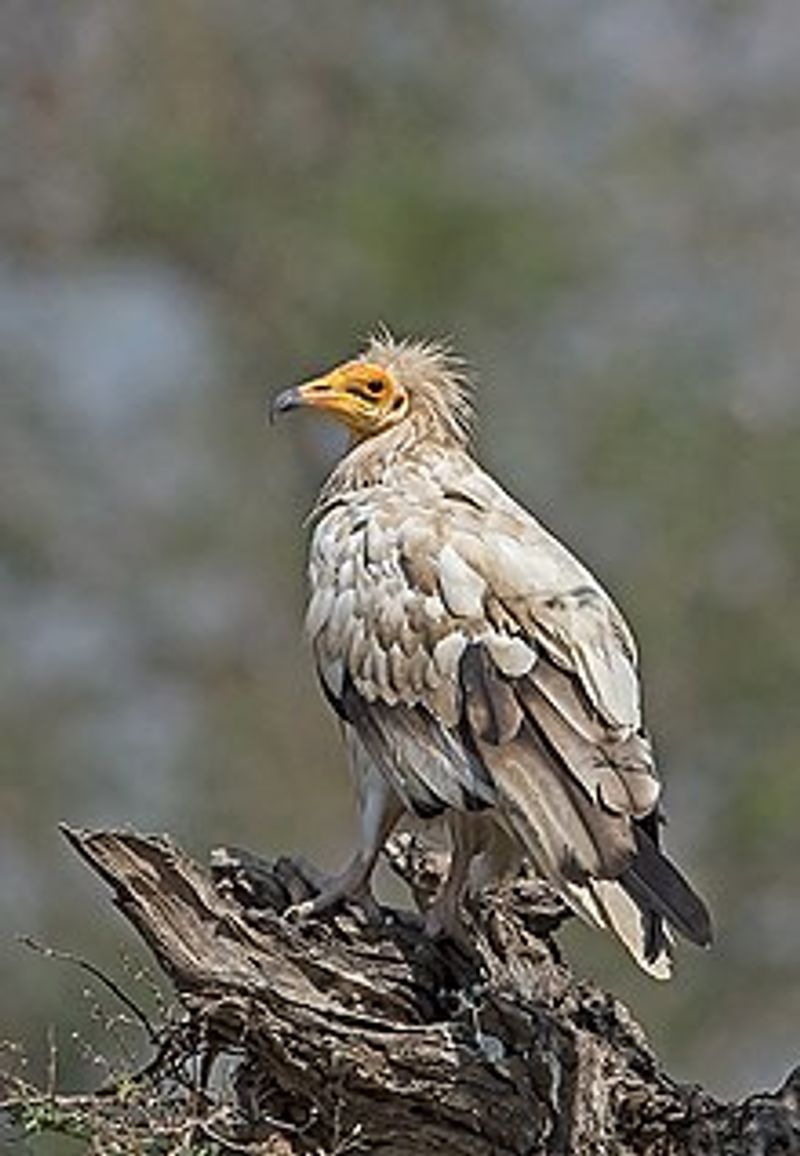
The Egyptian vulture is a unique species of Old World vulture. It is the only member of its genus, Neophron, and is also known as the white scavenger vulture or pharaoh’s chicken. The Egyptian vulture is a relatively small bird, with an impressive wingspan of up to four feet.
It has a mainly white plumage, with a black head and a yellow beak. The Egyptian vulture is widespread and can be found in many different regions of the world. Its range stretches from the Iberian Peninsula in Europe to North Africa, and even as far east as India.
The Egyptian vulture is a scavenger and is often seen feeding on carrion or other dead animals. It is also an important species for helping to clean up the environment, as it helps to dispose of carcasses and reduce the spread of disease.
The Egyptian vulture is an important species to many cultures around the world. It has been featured in ancient artwork and literature and is seen as a symbol of power, strength, and even immortality.
Today, the Egyptian vulture is an endangered species, and conservation efforts are being undertaken to help protect it.
| Kingdom | Animalia |
| Phylum | Chordata |
| Class | Aves |
| Order | Accipitriformes |
| Family | Accipitridae |
| Genus | Neophron |
| Species | N. percnopterus |
2. Palestine Sunbird
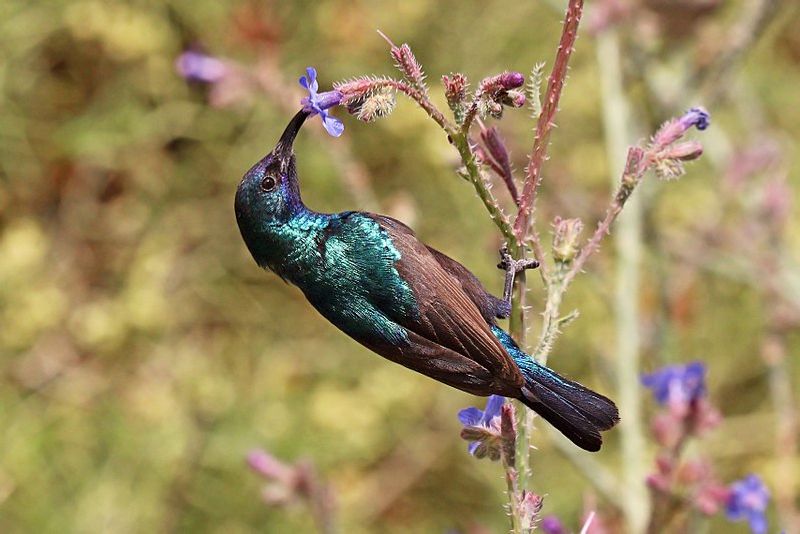
The Palestine sunbird is a small passerine bird that belongs to the sunbird family, Nectariniidae. This species of bird can be found in different parts of the Middle East and sub-Saharan Africa.
It is also commonly referred to as the orange-tufted sunbird due to its distinctive orange tufts of feathers. However, this name is also shared with another type of sunbird, the Cinnyris bouvieri, which is found further south in Africa.
This species of sunbird is known for its colorful plumage and its attraction to flowers, as it often feeds on the nectar of various flowers. The Palestine sunbird is an important pollinator of many plant species, as it visits numerous flowers in search of its food.
As a result, it plays a vital role in the maintenance of local ecosystems.
| Kingdom | Animalia |
| Phylum | Chordata |
| Class | Aves |
| Order | Passeriformes |
| Family | Nectariniidae |
| Genus | Cinnyris |
| Species | C. osea |
3. European Goldfinch
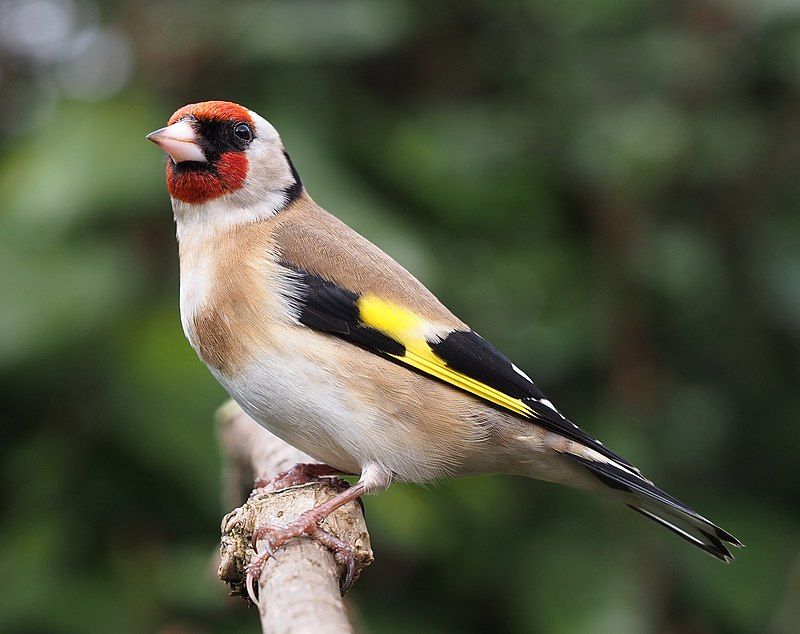
The European goldfinch is a small passerine bird belonging to the finch family. It is native to Europe, North Africa, and parts of western and central Asia.
It is a highly adaptable species and has been introduced to other parts of the world, such as Australia, New Zealand, and Uruguay.
As a result, it now has a much wider range than its native habitat. The European goldfinch is easily recognizable with its bright yellow and red coloration. It is a highly social species, often seen in flocks, and is a popular pet bird.
It feeds mostly on seeds, but will also eat insects, fruit, and buds.
It builds its nest in tree hollows or other cavities, and will often use nesting boxes if available. The European goldfinch is an important seed-eater, playing an important role in dispersing seeds of various plants.
Its introduction to new areas has led to concerns about the potential for it to cause damage to local vegetation, but its impact on native habitats is generally considered to be minimal.
| Kingdom | Animalia |
| Phylum | Chordata |
| Class | Aves |
| Order | Passeriformes |
| Family | Fringillidae |
| Genus | Carduelis |
| Species | C. carduelis |
4. Bulbuls
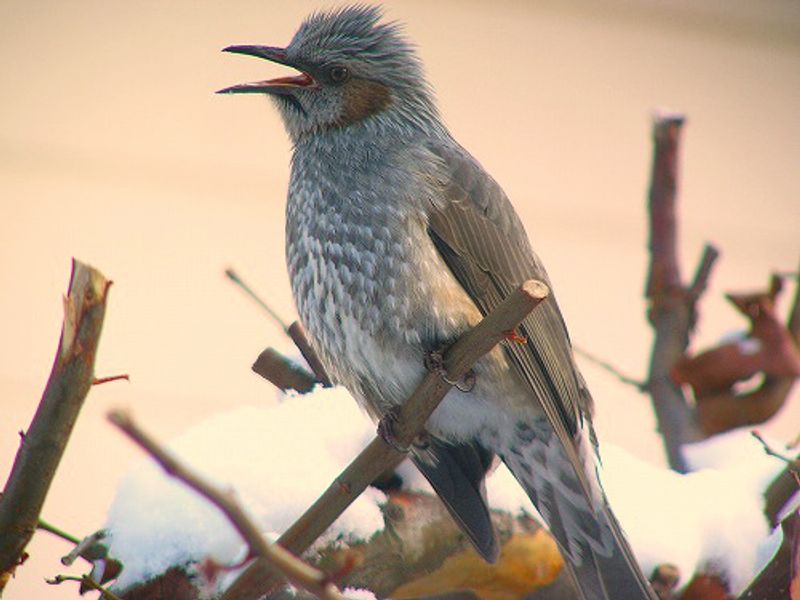
The bulbuls are a family of birds known as Pycnonotidae. These birds are of medium size and can be found in many places across the world. They are members of the passerine group, which also includes greenbuls, brownbuls, leafloves, and bristlebills.
This family of birds is found throughout Africa, the Middle East, from Indonesia to Japan, and even as far as tropical Asia. Bulbuls are an important part of the ecosystem, and they are known for their beautiful song.
They play an important role in the pollination of plants, as well as providing food for other animals.
They are also important in terms of controlling pest populations, which can cause serious damage to crops. Bulbuls have adapted to many different environments and can be found in a variety of habitats ranging from forests to deserts.
They are also able to migrate, which makes them even more versatile. In terms of appearance, bulbuls are usually brown or black with bright colors on their wings and tails.
They have black eyes and beaks, and their beaks are adapted for eating small insects and fruit. Overall, the bulbuls are an important species that have spread across the world. They play an important role in the ecosystem and are known for their beautiful songs.
They have adapted to many different environments and can be found in a variety of habitats.
| Kingdom | Animalia |
| Phylum | Chordata |
| Class | Aves |
| Order | Passeriformes |
| Family | Pycnonotidae |
5. Eastern Imperial Eagle
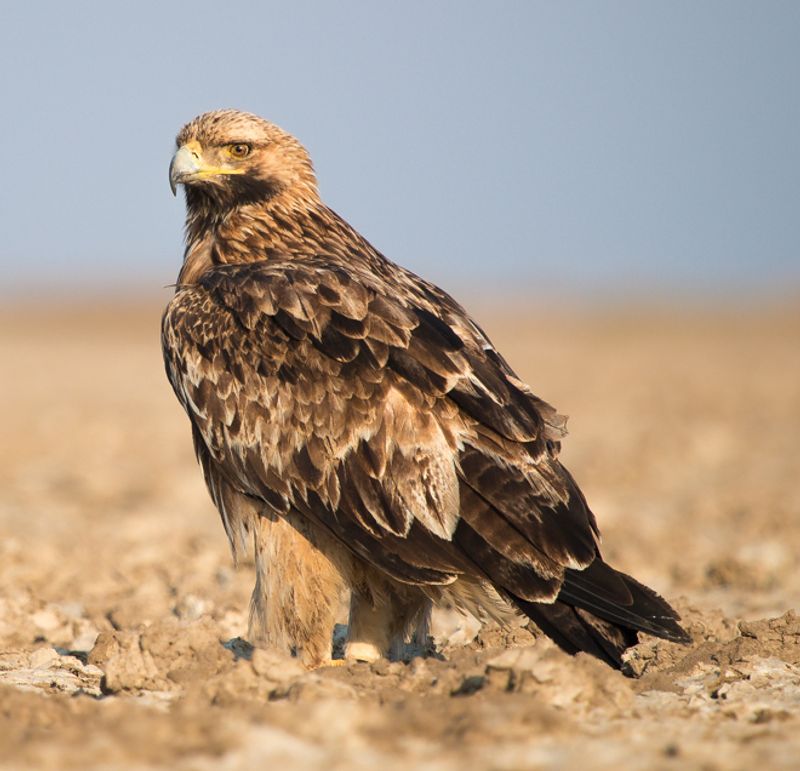
The eastern imperial eagle is an impressive raptor that can be found in a large range across different continents. It breeds mainly in southeastern Europe and throughout West and Central Asia.
Most of the populations of this species are migratory, meaning that they travel to different areas seasonally. During the winter months, eastern imperial eagles can be found in northeastern Africa, the Middle East, South Asia, and East Asia.
This allows them to find more food and better nesting areas during different times of the year. The eastern imperial eagle is a large bird of prey with a wingspan of up to 6.5 feet.
It has a distinctive black beak and yellow eyes, with a black band across the chest and a white belly. The wings are brown with black tips, and the tail has black and white bands. Eastern imperial eagles feed mainly on small mammals, reptiles, and birds.
They are also known to scavenge carrion. The eastern imperial eagle is an endangered species due to habitat loss, persecution, and poaching. Conservation efforts are now underway to help protect this species and its habitat.
The European Union has established several protected areas to help conserve this species and its habitat. In addition, many countries have implemented laws to protect eagles from hunting and poaching.
Overall, the eastern imperial eagle is a fascinating bird of prey that plays an important role in the ecosystem. It is an important species to conserve and protect in order to ensure the health of our environment.
| Kingdom | Animalia |
| Phylum | Chordata |
| Class | Aves |
| Order | Accipitriformes |
| Family | Accipitridae |
| Genus | Aquila |
| Species | A. heliaca |
6. Steppe Eagle
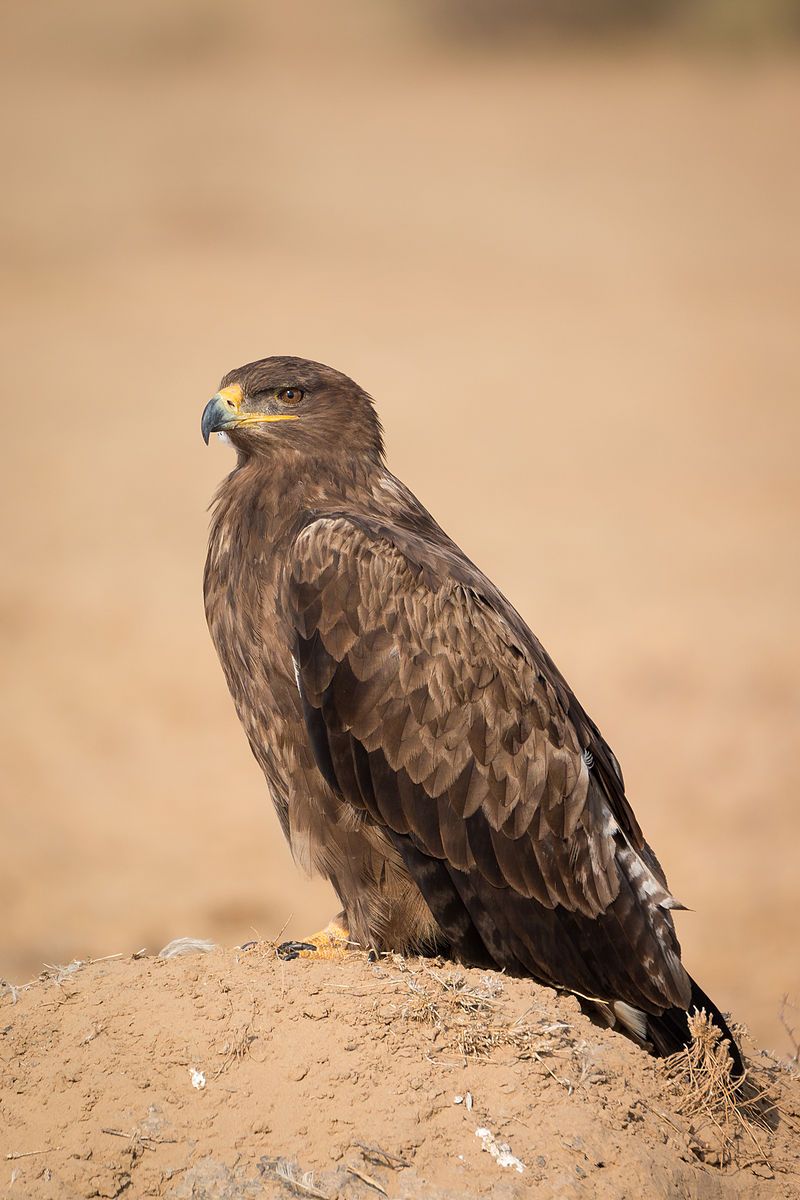
The Steppe Eagle is an impressive bird of prey belonging to the family Accipitridae, which includes all types of eagles. It is part of the subfamily Aquilinae, commonly known as the “booted eagles”.
This is because the Steppe Eagle has well-feathered legs, which is one of the distinguishing features of this type of eagle. The Steppe Eagle is a large bird of prey, usually having a wingspan that can reach up to 2 meters.
It is typically found in areas of grassland and open countryside across Europe, Asia, and North Africa. Its diet consists mainly of small mammals and birds, as well as carrion.
The Steppe Eagle is an impressive hunter and its eyesight is so powerful that it can spot a small mammal from several kilometers away. It swoops down to capture its prey in its talons and then returns to a perch to feed.
The Steppe Eagle is also a fiercely territorial bird, and it defends its nesting area from other birds of prey.
It is one of the most common birds of prey in Europe and Asia, and as such it is listed as a species of least concern by the International Union for Conservation of Nature.
| Kingdom | Animalia |
| Phylum | Chordata |
| Class | Aves |
| Order | Accipitriformes |
| Family | Accipitridae |
| Genus | Aquila |
| Species | A. nipalensis |
7. Long-legged Buzzard
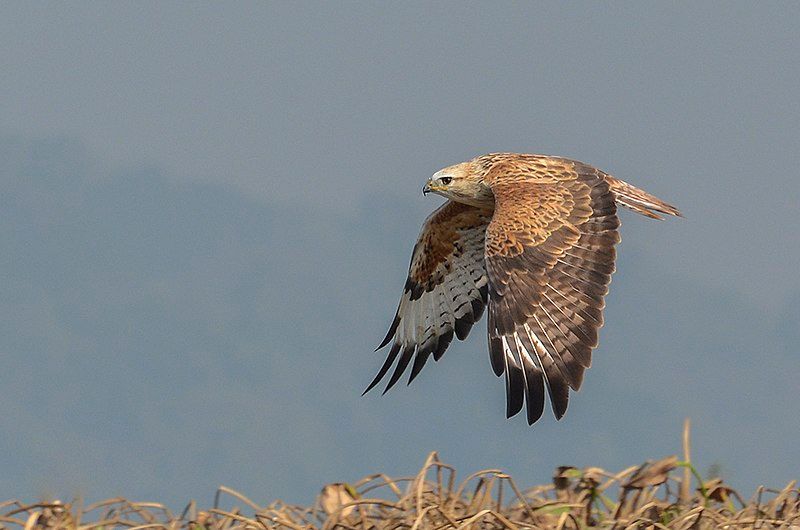
The long-legged buzzard is a large bird of prey found in many parts of Eurasia and North Africa. It has a wide range, extending from Southeastern Europe to East Africa and the northern parts of the Indian subcontinent.
This species is a member of the genus Buteo, which is a group of large predatory birds. The long-legged buzzard is one of the larger species of this genus and is well-adapted for its role as a predator.
Its long legs give it the advantage of being able to cover large distances in search of food, and its sharp eyesight and powerful talons allow it to easily catch prey. Its wide range allows it to take advantage of a variety of habitats, from open grasslands to dense forests.
This species is an important part of the ecosystem, helping to control populations of small mammals and birds in the areas where it is found.
| Kingdom | Animalia |
| Phylum | Chordata |
| Class | Aves |
| Order | Accipitriformes |
| Family | Accipitridae |
| Genus | Buteo |
| Species | B. rufinus |
8. Asian Desert Warbler
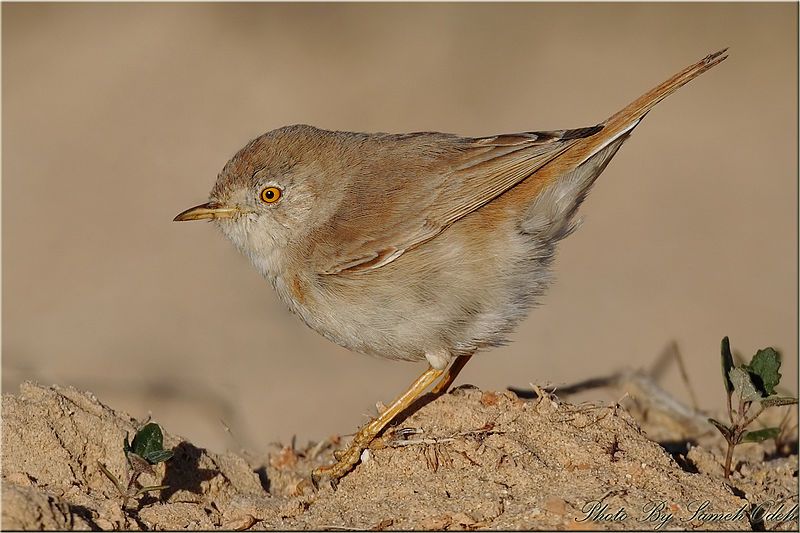
The Asian desert warbler is a species of small passerine bird found in the deserts of central and western Asia and the extreme east of Europe. This warbler is a migratory species, meaning that it travels to different areas in search of food and resources.
During the winter months, it can be found in southwestern Asia and the far northeast of Africa. In these areas, it inhabits similar habitats to those found in its breeding grounds.
Its diet consists mainly of small insects, such as beetles and flies, which it collects from the ground or by hawking. The Asian desert warbler is a fairly common species, and can often be found in small flocks during migration.
They are quite vocal, with their song being a series of short, high-pitched notes.
| Kingdom | Animalia |
| Phylum | Chordata |
| Class | Aves |
| Order | Passeriformes |
| Family | Sylviidae |
| Genus | Curruca |
| Species | C. nana |
9. Hoopoe
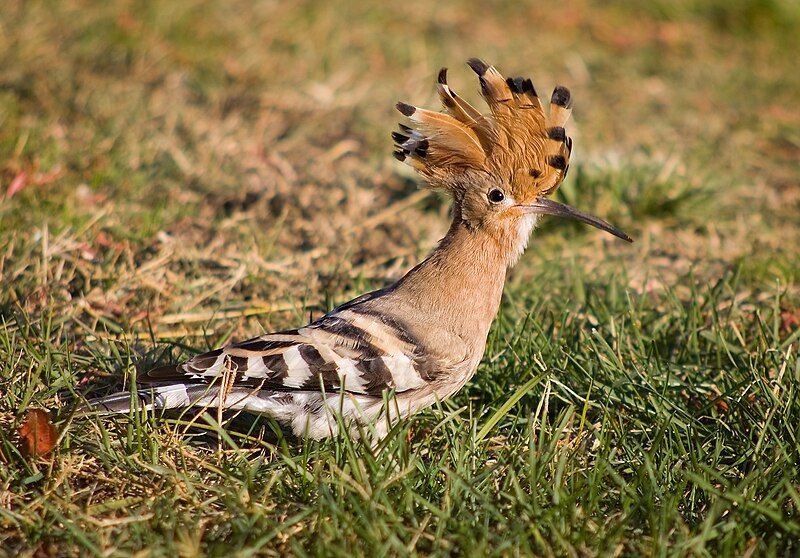
Hoopoes are a species of colorful bird found across Africa, Asia, and Europe. They are most notable for their characteristic ‘crown’ of feathers which distinguishes them from other birds.
There are currently three living species and one extinct species of hoopoe, although for many years all the living species were incorrectly categorized and grouped together as the single species Upupa epops.
The hoopoe is a medium-sized bird, typically ranging in size from 10 – 13 inches. They have long, slender bills which they use to forage for food, such as insects and spiders. Their wings are short and rounded, with a broad, rounded tail.
The feathers of the hoopoe are predominantly black and white, with a bright yellow on the crown of the head. The tail feathers are usually long and pointed, with a distinct iridescent sheen. Hoopoes are diurnal, meaning they are active during the day.
They are found in a variety of habitats, such as open woodlands, scrubland, grasslands, and cultivated areas. They are social birds and can often be found in flocks during the non-breeding season. They nest in cavities or under tree roots, in loose colonies.
Hoopoes have been widely admired for their beauty throughout history. In ancient Egypt, they were seen as symbols of royalty, and they were often presented as offerings to Pharaohs and gods. In more recent times, they have been featured in literature, art, and music.
The hoopoe is a captivating bird, and its distinctive crown of feathers makes it easily identifiable. It is an important species in many ecosystems across its range, and its continued conservation is essential for its survival.
| Kingdom | Animalia |
| Phylum | Chordata |
| Class | Aves |
| Order | Bucerotiformes |
| Family | Upupidae |
| Genus | Upupa |
10. Shrikes
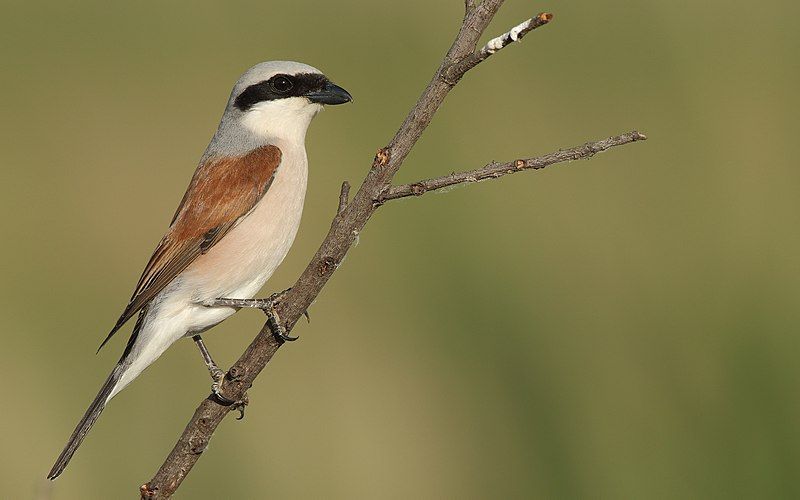
Shrikes are a type of bird found in the family Laniidae. This family is made up of two genera, with a total of 34 species in all. These birds are known for their strong, hooked beaks, which they use to hunt and eat their prey.
They are also known for their bold, aggressive behavior and for their unique nesting habits. Shrikes can be found in Europe, Asia, and Africa, where they inhabit a variety of habitats such as grasslands, scrublands, forests, and even urban areas.
These birds are known to be very territorial and will defend their territory vigorously. They mainly feed on small rodents, insects, lizards, and other small animals. They will also eat fruit and berries when available.
Shrikes are often seen perched on branches and wires, watching for potential prey. They are also known to impale their prey on thorns or barbed wire, which they use as a hunting tool and as a food source.
| Kingdom | Animalia |
| Phylum | Chordata |
| Class | Aves |
| Order | Passeriformes |
| Family | Laniidae |
11. Levant Sparrowhawk
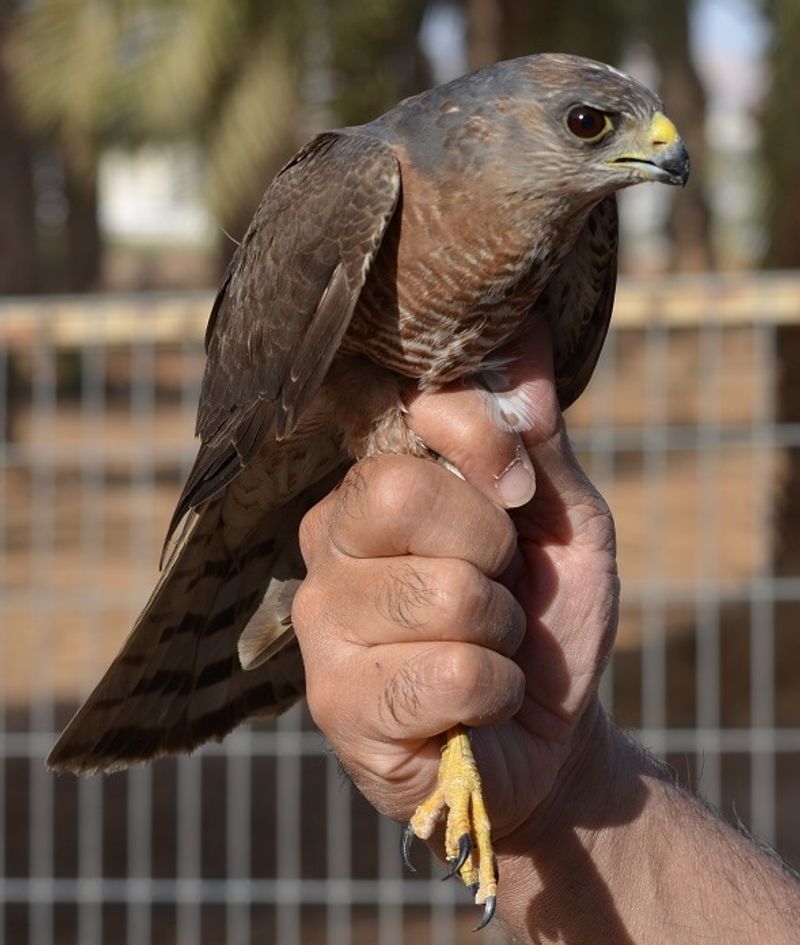
The Levant sparrowhawk is a type of small bird of prey. It is generally about 32-38 cm in length and has a wingspan of 65-75 cm. The female of this species is larger than the male, although the size difference is not as distinct as it is for the Eurasian sparrowhawk.
The adult male of this species is colored a blue-grey on top, with dark wingtips, and is reddish and barred underneath. This coloration is an adaptation that helps camouflage them from their prey while hunting.
The Levant sparrowhawk is an important species in the region where it lives, as it helps to maintain the balance of the ecosystem by hunting small mammals and other birds.
| Kingdom | Animalia |
| Phylum | Chordata |
| Class | Aves |
| Order | Accipitriformes |
| Family | Accipitridae |
| Genus | Accipiter |
| Species | A. brevipes |
12. Eurasian Sparrowhawk
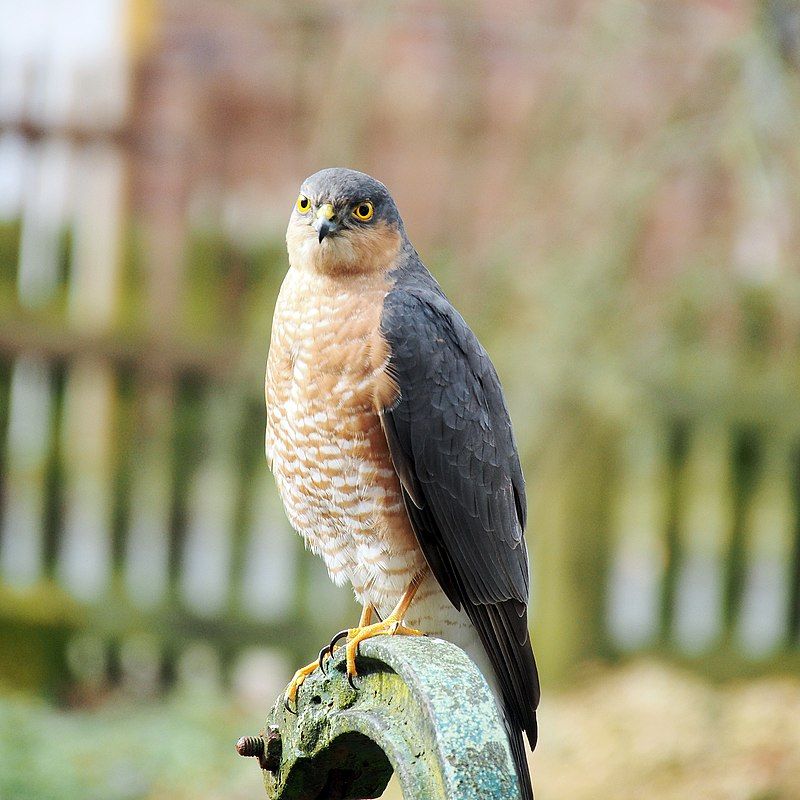
The Eurasian sparrowhawk is a small bird of prey that belongs to the family Accipitridae. It is also known as the Northern Sparrowhawk or simply the Sparrowhawk. Adult males have distinct plumage, with bluish-grey upperparts and orange-barred underparts.
Females and juveniles, on the other hand, have brown upperparts with brown barring on the underparts. This brown barring is a distinctive feature that helps to differentiate the females and juveniles from the adult males.
The Eurasian sparrowhawk is a skilled hunter and feeds on small birds, rodents, and even insects. It also has a wide distribution and can be found across parts of Europe and Asia.
The Eurasian sparrowhawk is an important part of the ecosystem and is a species that is worth protecting.
| Kingdom | Animalia |
| Phylum | Chordata |
| Class | Aves |
| Order | Accipitriformes |
| Family | Accipitridae |
| Genus | Accipiter |
| Species | A. nisus |
13. Short-toed Snake Eagle
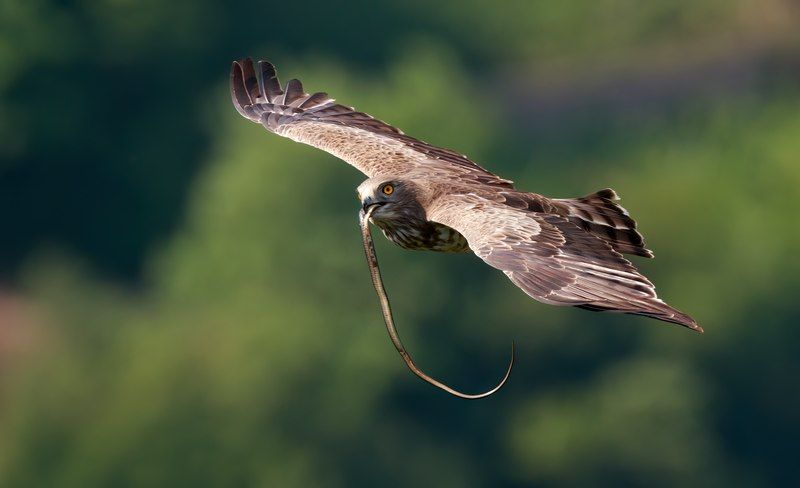
The Short-Toed Snake Eagle, or Short-Toed Eagle, is a medium-sized bird of prey in the family Accipitridae. This family is made up of various diurnal raptors such as kites, buzzards, and harriers.
The scientific name for this species is Circaetus, which is derived from the Ancient Greek words kirkos and aetos.
Kirkos is a type of hawk, while aetos translates to “eagle.” This is indicative of the bird’s status as a medium-sized eagle, which is not as large as some other raptors. The Short-Toed Snake Eagle is one of the many species of birds of prey found around the world.
It has a range that extends from Europe to the Middle East and Africa and is found in various habitats from deserts to wetlands. The Short-toed Snake Eagle feeds on snakes, lizards, and other small animals.
It is an important part of the ecosystem, helping to keep populations of these animals in check.
| Kingdom | Animalia |
| Phylum | Chordata |
| Class | Aves |
| Order | Accipitriformes |
| Family | Accipitridae |
| Genus | Circaetus |
| Species | C. gallicus |
14. Montagu’s Harrier
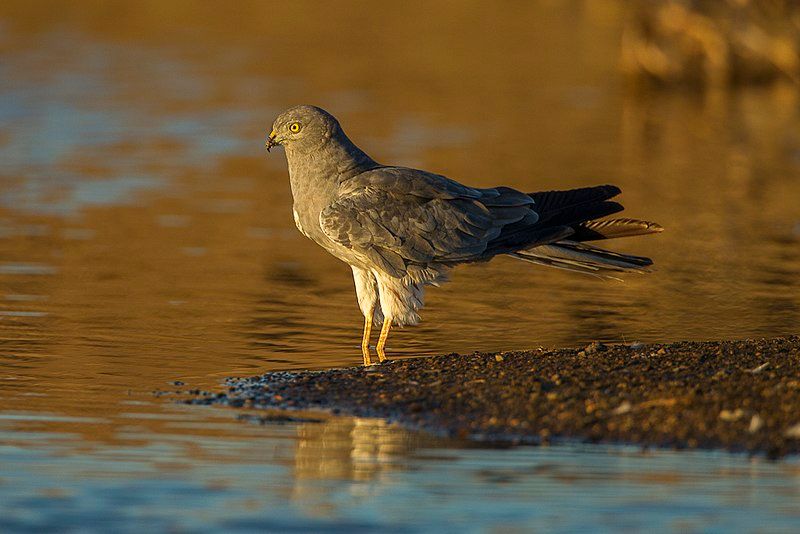
Montagu’s harrier is a species of bird of prey that belongs to the harrier family. This species of bird is migratory, meaning that it will travel long distances for different reasons such as to find food or to escape adverse climates.
The species is named after George Montagu, a British naturalist who lived in the 18th and 19th centuries. He was a great admirer of birds and is credited with discovering over 200 new species of birds.
Montagu was one of the first to study raptors in detail and to understand their behavior. He also wrote numerous books and articles on ornithology and was a respected authority on the subject.
His efforts to protect and conserve birds have had a lasting impact on Britain’s wildlife and the species he discovered are known around the world.
Montagu’s harrier is a fitting tribute to his legacy and an example of how his work has been immortalized in the names of the species for which he is remembered.
| Kingdom | Animalia |
| Phylum | Chordata |
| Class | Aves |
| Order | Accipitriformes |
| Family | Accipitridae |
| Genus | Circus |
| Species | C. pygargus |
15. Greater Spotted Eagle
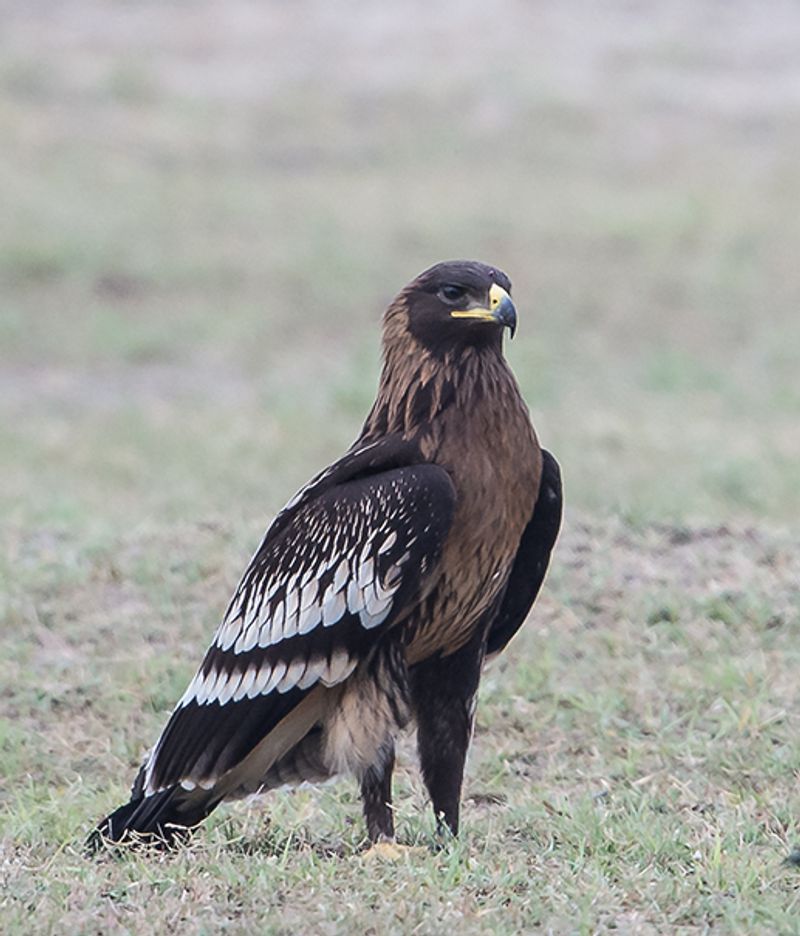
The greater spotted eagle, also called the spotted eagle, is an impressive bird of prey belonging to the family Accipitridae. It has a wingspan of up to 1.6 meters and is a migratory bird, traveling between Central Europe and Asia.
It is easily recognizable by its feathered legs, which are unique to the subfamily Aquilinae, commonly referred to as “booted eagles”. This subfamily is comprised of over 40 species of eagles, hawks, kites, and other kinds of raptors.
The greater spotted eagle prefers to inhabit grassland, open woodland, and scrubland habitats. It feeds mainly on small mammals, such as hares, rabbits, and other small rodents. It is also known to take small birds, reptiles, and insects.
It is a strong and powerful hunter that can take down larger prey, such as waterfowl and game birds. The greater spotted eagle has a conservation status of “least concern” due to its large population and wide range.
However, habitat loss and human disturbance continue to threaten its population. As such, conservation efforts are needed to help ensure the survival of this unique bird of prey.
| Kingdom | Animalia |
| Phylum | Chordata |
| Class | Aves |
| Order | Accipitriformes |
| Family | Accipitridae |
| Genus | Clanga |
| Species | C. clanga |
16. Black Kite
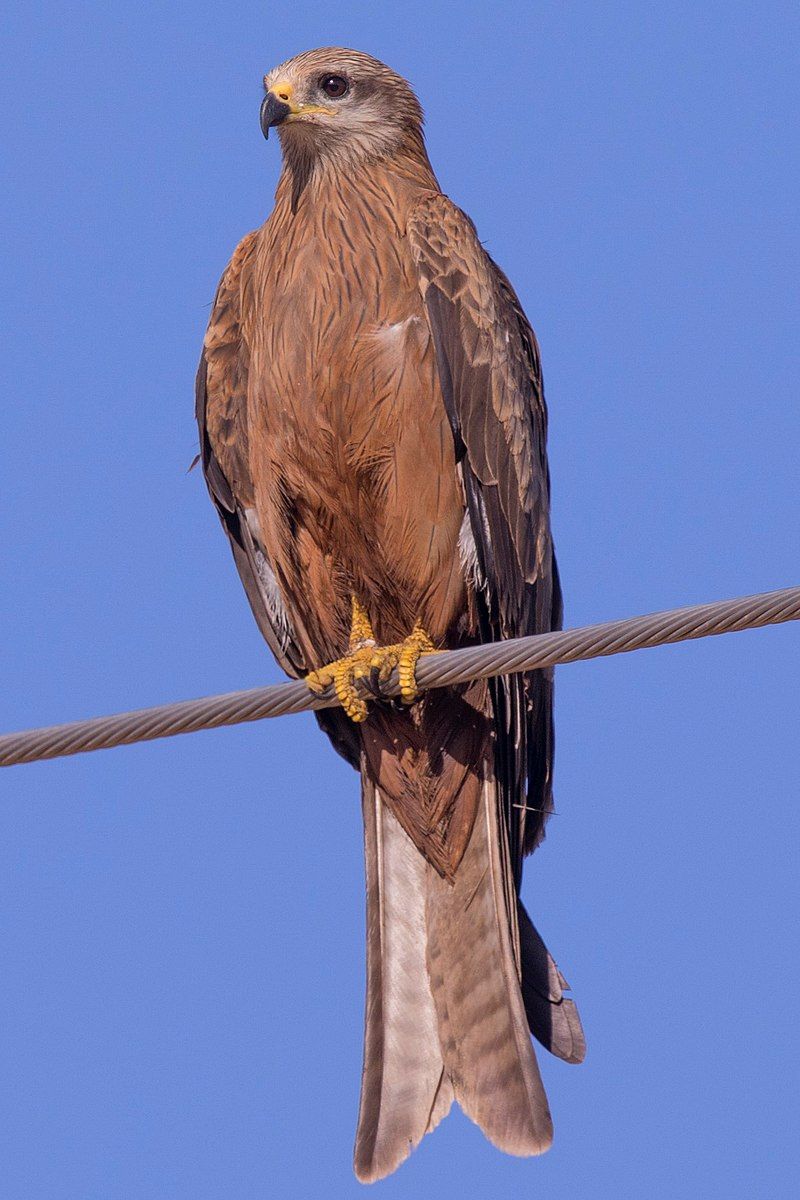
The black kite is a medium-sized bird of prey belonging to the Accipitridae family. This family is composed of many other diurnal raptors, making it one of the most diverse bird families in the world.
The black kite is believed to be the most abundant species in the Accipitridae family, with estimates suggesting that there are millions of them living across the world.
Despite this, some populations of black kites have seen a dramatic decline or fluctuations in numbers over the past few decades. This has been partially attributed to the destruction of their habitats, as well as hunting and poaching by humans.
Conservation efforts have been put in place to protect the black kite and other species of Accipitridae, but it is clear that more needs to be done to ensure their future survival.
| Kingdom | Animalia |
| Phylum | Chordata |
| Class | Aves |
| Order | Accipitriformes |
| Family | Accipitridae |
| Genus | Milvus |
| Species | M. migrans |
17. Crested Honey Buzzard
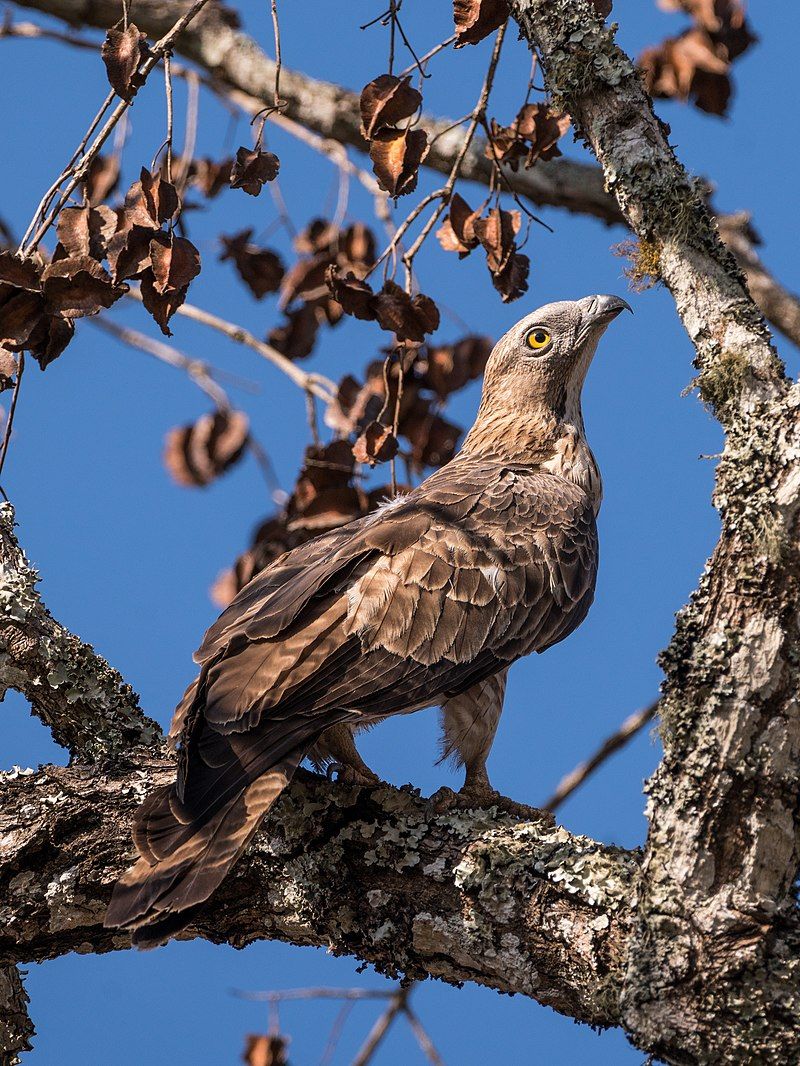
The crested honey buzzard is a bird of prey belonging to the family Accipitridae, which is home to many other diurnal raptors such as kites, eagles, and harriers. It is a medium-sized raptor, with a size range of 57 to 60 cm.
The species, Pernis ptilorhynchus, has six different subspecies. These subspecies are distinct from one another, but they all share the same general size and characteristics. The crested honey buzzard is an impressive raptor that is found in both tropical and temperate climates.
They have a unique plumage that consists of a brown body, a black head and neck, and white-tipped tail feathers. They also have distinctive yellow-crested heads, which are longer on the males than the females.
This species of raptor is known to be a very powerful and agile hunter. They have great eyesight and can spot prey from long distances. They primarily eat small mammals, birds, lizards, and insects.
The crested honey buzzard is a fascinating species of bird that is found in many parts of the world. Its impressive hunting abilities, impressive plumage, and its six subspecies make it an interesting bird to observe.
| Kingdom | Animalia |
| Phylum | Chordata |
| Class | Aves |
| Order | Accipitriformes |
| Family | Accipitridae |
| Genus | Pernis |
| Species | P. ptilorhynchus |
18. White-spectacled Bulbul
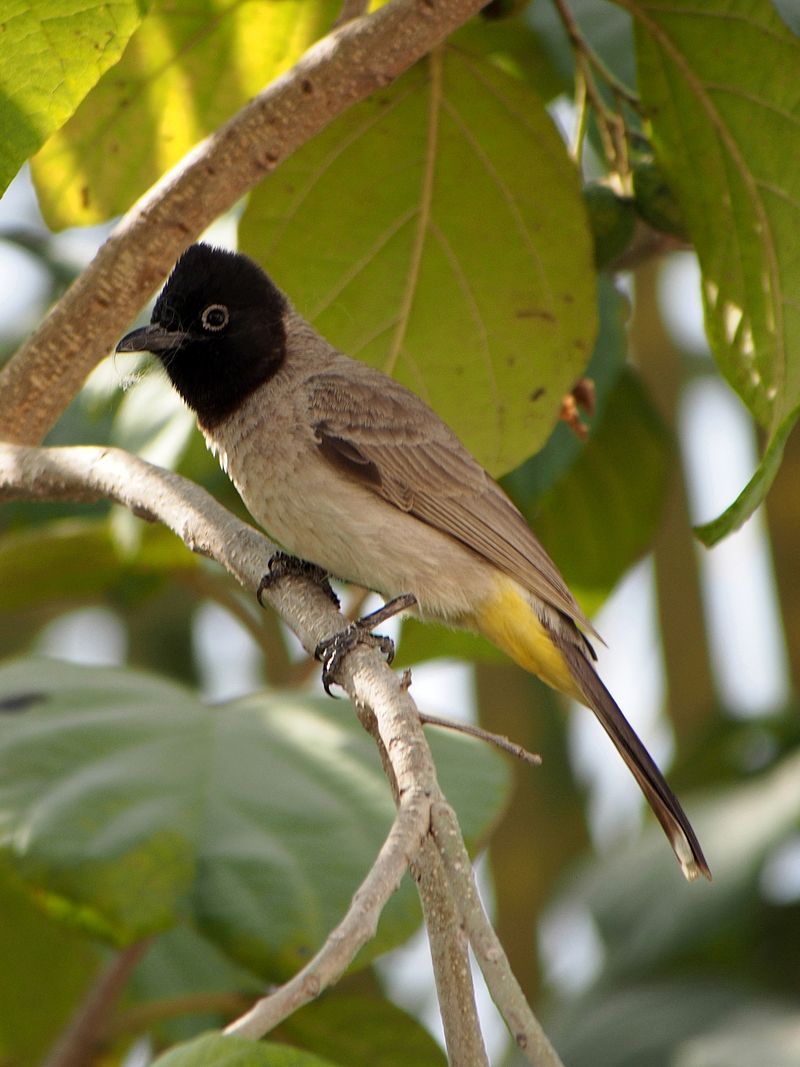
The white-spectacled bulbul is a species of bird belonging to the bulbul family. It is a medium-sized bird, measuring 20-25 cm in length and having a wingspan of the same size.
These birds are found in many parts of the Middle East, including Israel and Lebanon, and they are highly adaptable to the human environment, making their homes in fruit plantations, gardens, and even cities.
The white-spectacled bulbul is the most widespread member of the bulbul family in Israel and Lebanon, and its presence in these countries is a testament to its adaptability and resilience.
Its ability to survive in different environments makes it a valuable asset to the ecosystems of these countries, as it helps to pollinate plants and disperse seeds.
The white-spectacled bulbul is an important species for the conservation of the Middle East’s ecosystems, and it is important that its presence in these countries is recognized and protected.
| Kingdom | Animalia |
| Phylum | Chordata |
| Class | Aves |
| Order | Passeriformes |
| Family | Pycnonotidae |
| Genus | Pycnonotus |
| Species | P. xanthopygos |
19. Bluethroat
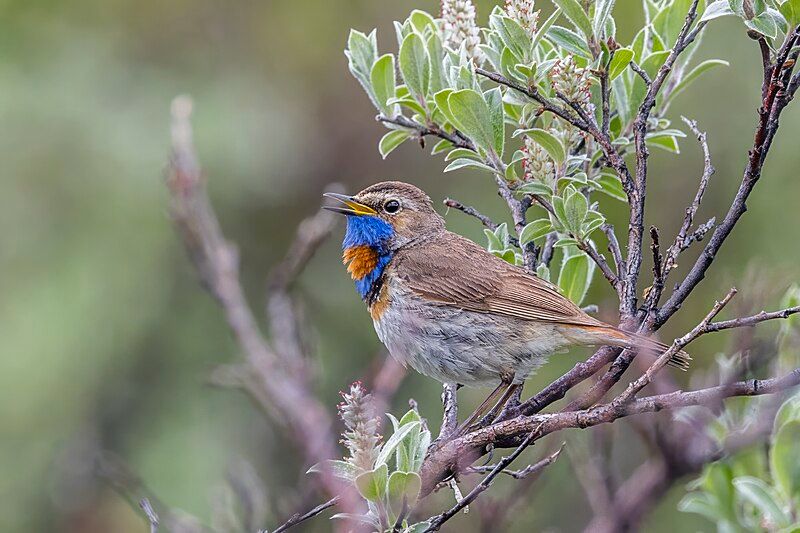
The bluethroat is a small passerine bird that is native to the Old World. It was formerly known as a member of the thrush family (Turdidae) but is now more commonly identified as an Old World flycatcher (Muscicapidae).
This species, as well as other similar species of small birds, are often referred to as chats. These birds are found in a variety of habitats, including grasslands, woodlands, and wetlands.
They are generally small in size, with some species reaching a length of just 8-10 centimeters. Additionally, they are characterized by their bright blue throat patch, which helps them stand out among other birds.
Their diet consists mainly of insects, but they may also consume small berries and other fruits. Bluethroats are solitary birds and can often be heard singing during the day.
They are an important species for the conservation of various habitats, as they help to maintain the balance of the ecosystems in which they live.
| Kingdom | Animalia |
| Phylum | Chordata |
| Class | Aves |
| Order | Passeriformes |
| Family | Muscicapidae |
| Genus | Luscinia |
| Species | L. svecica |
20. Whinchat
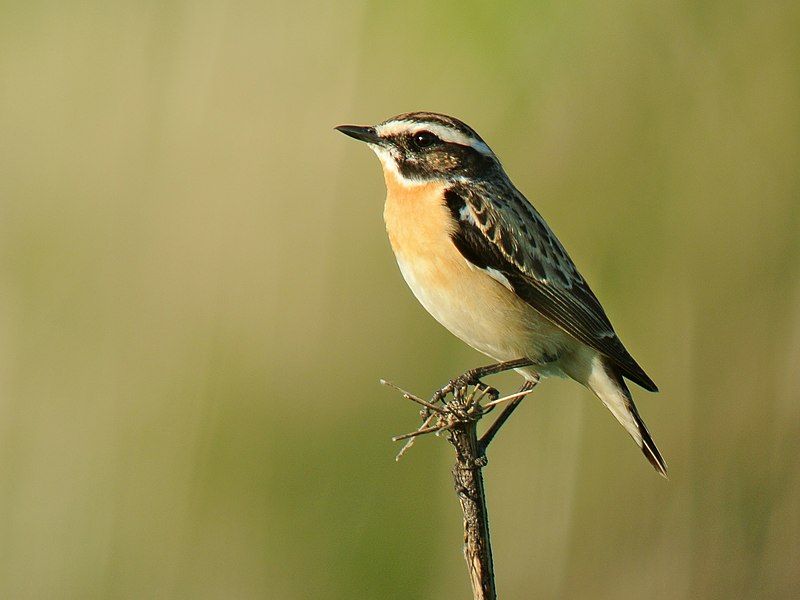
The whinchat is a small migratory bird found in Europe and Western Asia. It is known to breed in these regions and then migrate to Central Africa for the winter season.
It was once thought to be a member of the thrush family, Turdidae, but has since been reclassified as a part of the Old World flycatcher family, Muscicapidae. The whinchat is a small bird, typically measuring only about 15 cm in length.
It is mainly brown in color, with a white belly and a brownish-gray back. It has a whitish supercilium, or eyebrow, and a white throat.
The wings and tail are usually brown, and the legs are black. The whinchat is an insectivore, feeding mainly on small insects such as flies, beetles, and caterpillars. It also eats some seeds and berries.
It is a fairly active bird, often seen hopping around in open habitats in search of food. The whinchat breeds in Europe and western Asia from April to August. During this time, the male sings from high perches to attract a mate.
The nest is built on the ground in a sheltered place and usually contains four to five eggs.
The female incubates the eggs for about two weeks, and then both parents help to feed the young. During the winter, the whinchat migrates to Central Africa, where it can be seen in open grasslands and woodlands.
It returns to Europe and western Asia in the spring. The whinchat is a fairly widespread species, but its population is in decline due to the destruction of its habitat, as well as predation by other species.
Conservation efforts are underway to protect this species and its habitat.
| Kingdom | Animalia |
| Phylum | Chordata |
| Class | Aves |
| Order | Passeriformes |
| Family | Muscicapidae |
| Genus | Saxicola |
| Species | S. rubetra |
21. Menetries’s Warbler
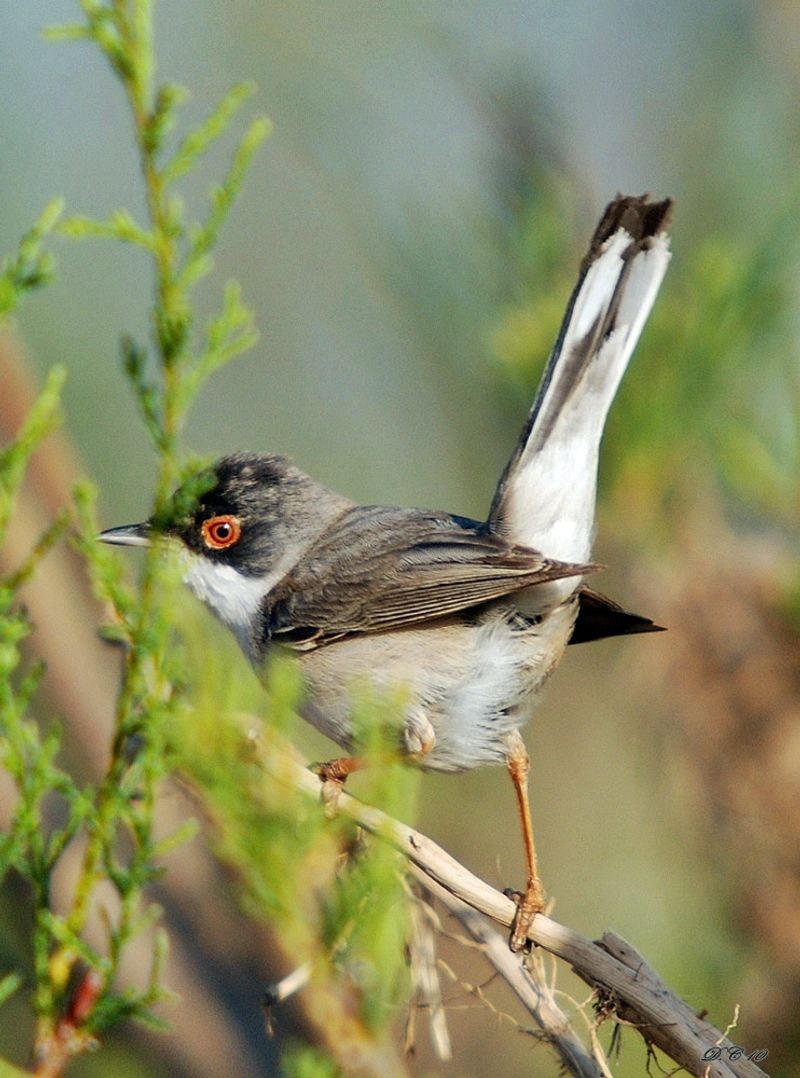
Menetries’s warbler is a small species of bird that is native to Southwest Asia. It is part of the genus Curruca and is known for its distinctive song. The species was named after the French zoologist Édouard Ménétries who first described it in 1832.
Ménétries was a respected scientist in his time and is celebrated for his contributions to the scientific community.
He was known for his work in the fields of ornithology and herpetology, and his discoveries in the field of zoology were groundbreaking. Menetries’s warbler is a small bird with a brown-streaked back, a white throat, and a grayish-brown belly.
Its wings are pointed and its tail is short and rounded. Its song is a pleasant warbling melody and the species is known to breed in thickets and scrub.
It feeds mainly on insects and is an important part of the local ecosystem. The species is classified as vulnerable by the IUCN due to its restricted range and decreasing population. As its habitat is being destroyed by human activities, its population is declining.
Conservation efforts are being made to protect the species, such as protecting the remaining habitats and monitoring the population. The species is also being studied to better understand its ecology and to ensure its long-term survival.
| Kingdom | Animalia |
| Phylum | Chordata |
| Class | Aves |
| Order | Passeriformes |
| Family | Sylviidae |
| Genus | Curruca |
| Species | C. mystacea |
22. Red Sea Warbler
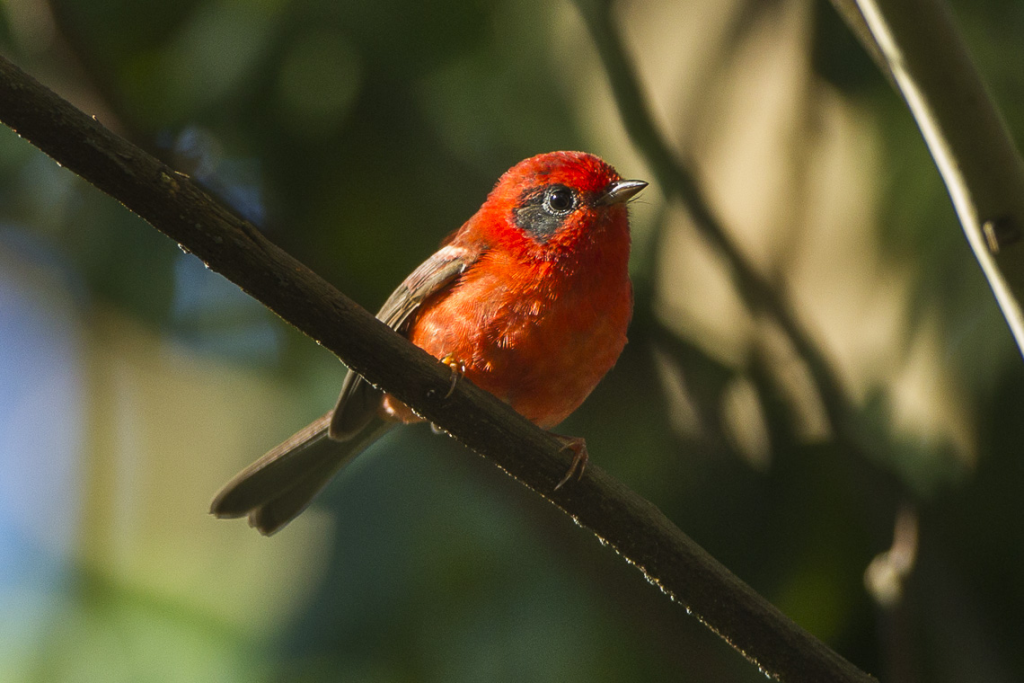
The Arabian warbler is a species of small, migratory bird that can be found in the Old World. It is known by several different names, including Red Sea warbler and Blandford’s warbler.
This species of warbler can be found in a number of countries in the Middle East, including Djibouti, Egypt, Eritrea, Israel, Jordan, Oman, Saudi Arabia, Somalia, Sudan, and Yemen. The Arabian warbler is renowned for its beautiful plumage, which is a mix of beige, brown, and grey.
It has a white patch on its throat and a bright yellow stripe that runs from its bill to its eyes. This species of warbler is normally found in vegetation near water sources, such as swamps, rivers, and lakes.
It is also known to inhabit open woodlands and shrublands. The diet of the Arabian warbler consists mainly of insects, such as beetles, grasshoppers, and caterpillars. It also feeds on small fruits and berries, as well as some seeds.
During the breeding season, the male sings to attract a mate. The female will then build a nest in a tree or bush and lay up to three eggs. The Arabian warbler is classified as Near Threatened by the International Union for Conservation of Nature.
This is due to habitat destruction, climate change, and other environmental factors. As a result, conservation efforts are being implemented to ensure that this species of warbler can continue to thrive in its natural habitat.
| Kingdom | Animalia |
| Phylum | Chordata |
| Class | Aves |
| Order | Passeriformes |
| Family | Sylviidae |
| Genus | Curruca |
| Species | C. leucomelaena |
23. Streaked Scrub Warbler

The Streaked Scrub Warbler is a small bird and is the only species in its genus, Scotocerca. It can be found in northern Africa and south-western Asia. It has a distinctive streaked pattern on its feathers that sets it apart from other species.
It is a passerine bird, which means it has a long and slender bill and feet that are adapted for perching. The Streaked Scrub Warbler is a small bird, and its length is usually around 10 cm. Its wingspan is usually between 15 to 19 cm.
It has a brown-streaked upper body and a white underbelly. Its wings are also brown with streaks of white. Its bill is long and slender, and its feet are adapted for perching. The Streaked Scrub Warbler feeds mainly on insects, but will also eat small berries.
It prefers to feed in thickly vegetated areas, such as scrubland, thickets, and rocky slopes. It is territorial and will defend its breeding grounds from other birds. The Streaked Scrub Warbler is a solitary bird, and it is usually seen alone or in pairs.
It breeds between April and August and will build a nest in dense vegetation. The female will lay two to three eggs and both the male and female will incubate them for around two weeks.
After hatching, the young birds will fledge in about two weeks. In conclusion, the Streaked Scrub Warbler is a small passerine bird that is found in northern Africa and southwestern Asia. It has a distinctive streaked pattern on its feathers and is adapted for perching.
It feeds mainly on insects and will defend its breeding grounds from other birds. The Streaked Scrub Warbler is a solitary bird that breeds between April and August.
| Kingdom | Animalia |
| Phylum | Chordata |
| Class | Aves |
| Order | Passeriformes |
| Family | Scotocercidae |
| Genus | Scotocerca |
| Species | S. inquieta |
Conclusion
Birds in Gaza face many struggles, including a lack of resources, destruction of habitat, and the dangers of war and conflict. Despite these challenges, birds in Gaza remain a source of joy and beauty and a symbol of resilience.
Protecting and preserving this natural resource is essential for the sustainability of Gaza’s unique bird species and the health of the local ecosystems.